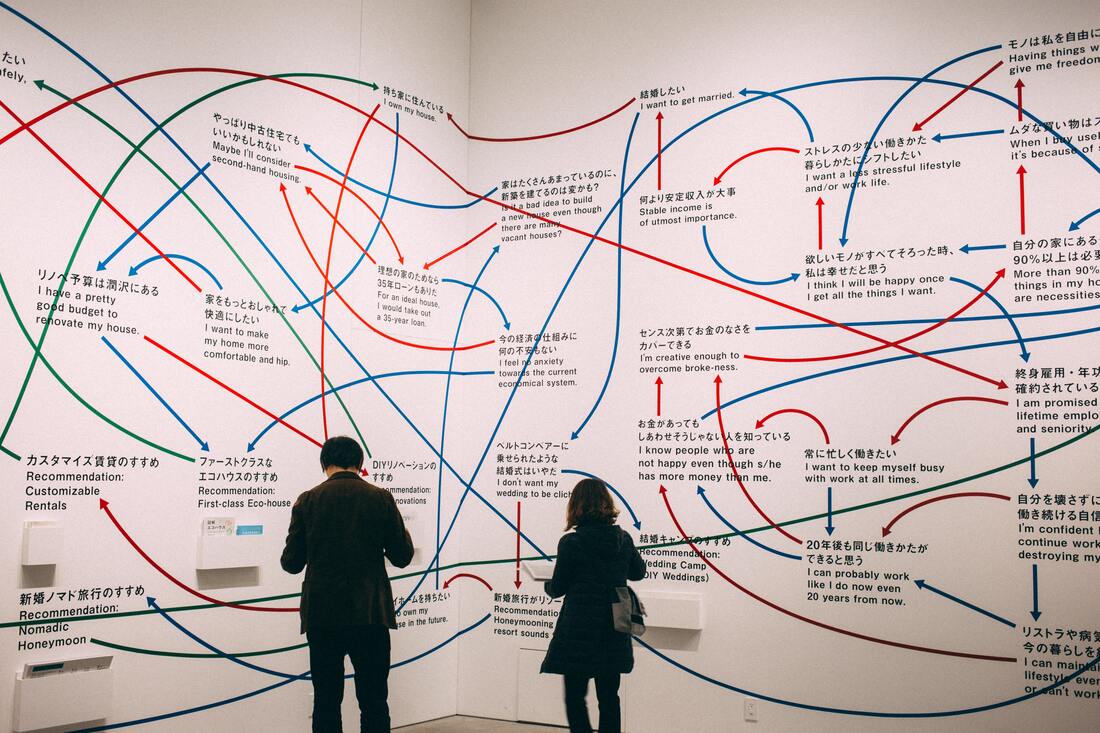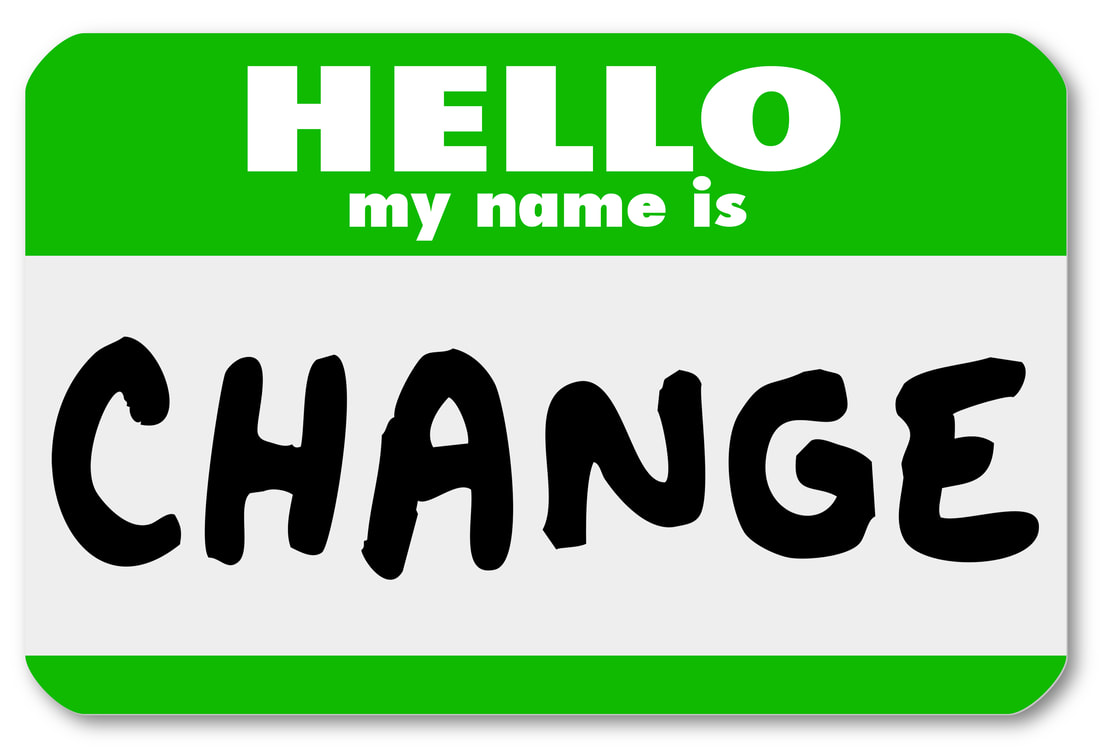|
Photo by William Bayreuther on Unsplash
My personal belief about Change communications is: if you’re not being seen you’re not being heard. And yes, this post is inspired by another 80’s electronica gem. Living on video, if you’re Canadian you would have heard this song well into the 90’s. I’ve mentioned how important repetition is and the importance of categorizing your communications into tactical and advertising. Tactical communications only get attention if your advertising communications have impact. Why? If people aren’t interested, they won’t pay attention! That’s why advertising communications need to be interesting, and not oversaturated. I’ve run into many leaders who don’t know where to start with change communications. Messaging and figuring out what’s changing can be done by the change team, and leaders are the most important in the first part of change, building awareness and understanding, and emphasizing the importance of change. This is where you’re going to get momentum from your innovators, early adopters and early majority as you’re moving towards implementation. But here’s what we need to think about when planning communications. You’ve got to make it interesting, and you’ve got to make it novel. Then, you build in reinforcement through existing or traditional channels. Here are some of my favorite ways to get people’s attention and focus on the early messaging: Events – contests, giveaways, special events (donut wall, anyone?), Q & A events or events focused on interaction with stakeholders. These are great ways to build excitement around the change. Your leadership needs to be present and visible during events. Figure out what works for your organization and go from there. Be creative, make it interesting and figure out, what’s in it for them? Have something unique to offer your participants. Messaging at this stage revolves around the change, the benefits, who is leading it, and overall high-level details (timeline, team, sponsor and leadership support). Short form Video – Tiktok has ushered in a dynamic new world of video communication. Learn how to harness the power of video and the power of your phone’s camera. Make sure that videos are short (1 minute or less) they can feature humour (but it needs to be work-appropriate). Introduce your leaders and sponsors this way, using some of the great templates out there. Use the video to highlight key benefits, important information and updates on the change. Plan to publish videos often, and ensure you have a content plan. You want to publish often, to keep the momentum and interest up about your change. But, you need to remember that video is short and timely, this isn’t the place to post information about the training schedule or other things. For me, short-form video is the new poster! Mid-length Video and Audio – Video casts, podcasts and various other modalities exist for elaborating on the change messaging and stories that you want to promote with your change. Keep these short but longer than short form video (2 – 15 minutes) use this for interviews, success stories, and interaction with stakeholders that is public, you should also use video to highlight communication activities like events, sponsors meeting with stakeholders, town hall meeting highlights. Videos including audio and visual components as well as closed captions are very effective for transmitting and reinforcing messaging. Newsletters – a written format is also effective for change communications. This is where you can reinforce items created in short and long form video, written information (letters or articles from sponsors, and leaders, success stories, change stories). This is the place where you’re also drawing attention to your tactical communications, like, where to find training resources, how to access test environments, schedules and other pertinent “need to know” information. Newsletters using a simple publishing tool are highly effective, furthermore, you get built in analytics that can help you tailor your messaging in this format to your audience. Interaction – you want to be thinking about interaction and how to build it in to your communications. Long form surveys are cumbersome, instead think about building in quick polls, one question polls, and micro surveys. There are a ton of great electronic tools out there with the possibility to integrate with the suggested modalities above. Plan on regular interaction and keep it consistent. Pulling it all together: Thinking about all the ideas above, you will need a central place Your change needs a platform, and in this new hybrid world, you’re going to need a place to make it all come together. You are going to need:
Reinforcement: So you’ve got a ton of exciting things happening with all of the different efforts and content. If you’re remembering the law of saturation, you know how important it is to reinforce the key messages. This is where repetition of the message but using different ways to say it becomes important (for example, multiple short form videos with similar themes). This is also where you will need to tap into the existing communications infrastructure. What does your organization do today to communicate? Collaboration sites and message boards are a way this happens, also, regular messages from the leadership and meetings focused on information are places where you should be reinforcing the messages about change. What are some change communication tactics or formats that you’ve found effective? BONUS: we’re sharing a free communications plan template with our subscribers in the November edition of our newsletter. We’ve extended our deadline! Sign up before November 7th HERE to reserve your copy! Going forward we’re going to be sharing free templates for core change management deliverables every month with subscribers to our newsletter.
0 Comments
Photo by charlesdeluvio on Unsplash
This picture reminds me of how I used to approach change communications! It seemed like an endless array of tactics and in-the-moment decisions and writing key messages. Each leadership decision would drive another flurry of activity and we’d finally catch our breath to do it all over again. I now have a more structured way to approach this task. It starts with me communicating to my sponsors and leadership about how change communications work, what makes them effective and their role in leading the change and how communications is part of that. I find the biggest challenge with change communication is that sponsors and leaders underestimate their role in making this successful. Many leaders think that facilitating conversations and aiding in decision-making and getting obstacles out of the way for the team is a job well done. It is a critical part of the work, but as important as any of these items is their visibility, mastery and ownership of change communications. In the Connected Change ™ framework we talk about power and influence as a key element. Your sponsor should have a level of power, and their role is also to recruit supporters with additional high levels of power. At times, change messaging and visible, vocal support for the change in front of stakeholders will need to come from the most powerful person in the room. Ownership of the change lies within the organization and sponsorship, and the leadership need to take on this role. The change manager never leads communication efforts and should not be the person delivering any messaging. Change communications work well when the change manager can help the leadership and sponsorship look good. I have a friend who used to work on political campaigns. He likened his role to speech-writer, event coordinator and personal assistant. To an extent, this is how the role of a change managers works in communications. Set up the leader to look good, tell them what to say, you write and they deliver! Then you also have to think about when and where and how that messaging is being delivered, all while coaching that leader through the process. What makes leadership communication effective is authenticity, consistency and empathy. Change can be a hard message to deliver. Many leaders are cautious about saying too much too soon or getting the message right. I have a ton of understanding and patience for this, as they understand the gravity and importance of what they are saying and want to make sure it is successful. Change communication works in line with the phase of change that you are in. For leaders, at the beginning they’re focused on understanding, excitement, and benefits. In the middle, they are rallying support, thanking people for their commitment and effort, and shining a light on success stories. At implementation and later stages, they are sending out calls to action, talking about the stories of the organization, and aligning their new world with history. Talking about the change and its success as well as what we have learned and will improve in the future, is the key part to focus on at the later stages of change. You may have noticed that there are some things missing! During the implementation phase, there is lots of communication happening, but leaders don’t need to be delivering detailed tactical messages (for example, where to get trained and what training to complete, who the super-users or change champions are). This is the role of the change management team to fill in those details, but a leader has a minimal role in communicating the tactics of change. I have developed a communications planning tool that helps break down who is doing what, and what types of communication is happening at each phase of change. This can be easily linked to a project plan and aligned with various initiatives and dates. We’re sharing this free communications plan template with our subscribers in the November edition of our newsletter. Sign up before November 1st HERE to reserve your copy! Going forward we’re going to be sharing free templates for core change management deliverables every month with subscribers to our newsletter. Photo by Chris Liverani on Unsplash
You are defined by what you tolerate. If you are a leader in an organization, I hope these words have weight this week. This is one of the core tenets of Connected (Culture) Change ™, and this prophecy is coming true for Hockey Canada this month. You can read more here and read the latest at pretty much any national news outlet. Canadians sure love their hockey. For my friends and readers who are not Canadian, let me tell you that this is a big deal, the center of our identity is falling apart. The very core of Canadian-ness, Hockey, is being eroded to the core. We are facing some very ugly music. I say this with a bit of humor. Hockey certainly isn’t the centre of the Canadian experience for many, but these happenings are having a broad impact. The governance review only scratches the surface of what needs to change in the institution that is hockey, the elite levels of professional, amateur and national sport, and the sport that is played in millions of community rinks on weekend mornings and late into school nights across the country. The board was incompetent and ineffective, and failed at their fiduciary duty, yes. But keep in mind the way that non-profit boards work, the people on them may be highly qualified, but they typically do not have long history with the organization. Board tenure is typically capped, and only the CEO of the organization is accountable to the board. The rest of the leadership and management is under the responsibility of the CEO. Boards have no power when it comes to management and leadership decisions. They have jurisdiction only over the fiduciary health of the organization, and their governance responsibilities, they set strategy, hold the CEO accountable, evaluate and compensate the CEO and monitor the progress of the organization against the strategy. Hockey Canada is not the first time I’ve seen catastrophic governance failure, especially around fiscal responsibility. It probably won’t be the last. When this happens, it is typically a lack of experience in both board membership and Leadership (CEO and CFO). We’ve always known there was a culture problem in the sport. These problems are not new. But nobody wanted to do anything about it before. I’m not going to detail the history, but the criticisms from Pascal St. Onge, Canada’s minister of Sport are on the right track. She criticized Hockey Canada treating sexual assault as an insurance problem rather than a systemic issue that should be confronted. The key to understanding how this happens is culture. Hockey, as a sport, views bad behaviour of the players (and often coaches) permissible because the team must win. Therefore, the behaviour and actions of the players on the 2018 junior team (and others) is seen as a foregone conclusion. The institution and organization expect that this “type of thing” will happen along the way, accepts that this is “part of the game” and sets up a damages fund, using player fees from community organizations across the country to fund settlements when someone comes forward with a claim. There is a huge advantage to the organization to doing this. It protects players from potential legal actions brought against them, by offering an alternative to victims. After all, you can’t travel out of the country with a winning team if a bunch of players have ongoing criminal investigations against them. Legal settlement is always in the organization’s best interest. Protect the players, protect the game. The problem at Hockey Canada is accountability – you see it at the board level, you see it at the management and leadership levels, and you see it emerge in lower levels of the sport as soon as competition becomes more important than personal and professional ethics. The challenge here is that, fixing this goes beyond fixing Hockey Canada, the national institution. The ENTIRE culture needs an overhaul. An allegory to this is, a criminal doesn’t wake up one morning, rob a bank, and make off with a million dollars spontaneously. This behaviour starts early, it is repeated often, and is reinforced. Maybe it is pinching a few candy bars from the local corner store, and not getting caught. Later, stealing a necklace from a relative and pawning it. Family members write it off as “they are a good person at heart, just going through a rough time”. At school, they are caught with fundraising proceeds from an event at the school. But they are a star football player and suspending them means that the team will certainly lose, so the principal lets them off with a warning. Later, they embezzle small amounts from their employers, a little cash out of the till, cash a few cheques, but they always get away with it. Nobody holds them accountable, and the behaviour is tolerated and reinforced until it escalates to a point that they rob a bank. Crime does not start with robbing a bank, just as the actions that are the subject of the review do not appear for the first time at the 2018 junior championship. Hockey Canada is no different from many organizations with toxic cultures. Tolerance of bad behaviour from star performers has caused this. It's so steeped into the culture that it is accepted as a foregone conclusion. A foregone conclusion that the CEO and CFO supported and that the board didn’t even think to challenge. The lesson learned here, for leaders, is that you are defined by what you tolerate. Photo by Jayne Harris on Unsplash
My first house in Toronto was in the beautiful neighborhood of Wychwood. We would go for long rambling walks with our 1-year-old Labrador rescue Ella through the storied Wychwood Park. There is a beautiful state home in the center of the park, which is known as the McLuhan House. Who? Well, Marshall McLuhan, the Canadian philosopher who coined: The Medium is the Message. So why do I bring this up? In change communications what your saying (the message) is as important as WHO is saying it (the medium). This is the top area of friction I find with change leaders. So many of us want to share the message but don’t want to be the medium or be the main delivery point for the message. But THIS is the fulcrum of success for change communications. If you’re the change leader, you are in many ways, the embodiment of the message. So you need to be out there, early and often, talking about change. Secondly, many leaders overestimate the impact and power of their words, and underestimate the frequency and repetition required to make communications impact. Despite our world being saturated with communications, digital, audio and otherwise, people still require a level of repetition and consistency with a key message to understand it, internalize it and importantly, act. I’ve often heard the “rule of 7” referenced, in that people need to hear a message 7 times before it sinks in. I found a great breakdown of where this comes from, and also, a very old communications outline from the 1800’s that shows we haven’t changed much. But change communication is about more than a catchy advertising slogan. More often than not, we need people to understand and then act on the messages being communicated. This is why:
A communications plan helps keep things organized. Really, it ends up looking a lot like a project plan with a few other key inclusions. We’re sharing a free communications plan template with our subscribers in the November edition of our newsletter. Sign up before November 1st HERE to reserve your copy! Going forward we’re going to be sharing free templates for core change management deliverables every month with subscribers to our newsletter. The planning stage of a change is often the most overlooked and underused stage of change. Most leaders want to jump to creating a compelling vision, or trying to move the change forward and work though the challenges with their people. Others have a fear around things not going well and try to avoid the change as long as possible.
A good plan sets up your change for success. And I’m not talking about a change management plan (yet!) but the preliminary thinking and planning that goes into getting ready to change. These are the key questions I work through with the change sponsorship team and senior leadership as we’re getting ready to start the planning process. 1. What is the change Establishing a clear understanding of the problem, and what the change will address is critical before any work can start. If the team and leadership is centered around a common problem, and the change is a solution, then it becomes clear WHY the change is happening. Alignment among the leadership of the organization is key here and helps to avoid challenges later on that can arise when people have different ideas about what the change is, and what benefits it will bring them. 2. What are the goals for the change? This leads from the first question – what are the 3 – 5 key things that the change will accomplish for us and for the business. If we don’t have a clear idea on this at the beginning, this is where we can see lots of different stories bubbling up! In the absence of a main “headline” people will make up their own stories. While identification of the positive goals of change are important, also identifying the downsides of the change is important. 3. How and when do we know we are successful? Many change managers call this the future vision, but I like to make this a lot more tactical. While future visioning can be important, and thinking big a wonderful way to look at possibility, success for change means that we need to get tactical. This is a key item that will go into your change management plan, and it is important to know “benefits management” but really its all about knowing what success is, making sure everyone is aligned on that, and agreeing to when you’ll measure it. 4. Who are the people most affected by this? Understanding from your senior core team how their people will respond to change is going to give you a clear picture of how to build and address your stakeholder strategy in the next phase. Understanding who is highly affected v.s. who is marginally affected will help you align your efforts in the next step where you use Connected Change ™ to understand the group dynamics and systems that undelay the stakeholders that will be most affected by the change. 5. How do communications work around here? Getting a sense of how things are done today with regards to communications is going to help you understand what you need to be thinking about in terms of planning the communications and approaches in the change management plan and the communications plan. Use the approaches that work well, and add or enhance from there. Remember, repetition is key here! Get prepared for “short, sweet and then repeat” so that you are communicating early, and often. 6. How confident is the senior team about early communication? Nobody likes to feel that they are the last one to find out about change! Often teams and stakeholders feel that communications are “late” and they would have liked to know earlier on about the change. On the other hand, leaders feel cautious around communicating too early when they don’t have the answers. A key approach with change that makes it successful is transparency. Leaders need to get comfortable with saying they are “figuring things out”, “we are working on it” or “this is part of where we need your input to make it successful”. Having all the answers isn’t a prerequisite to a successful change, but communicating early and often is. You’ll need to be working with the team to get them comfortable with early communication, as it will reap rewards later These are the six key questions that I like to ask as I’m embarking on a change journey with a leadership team and sets you up well for the planning stages of change. Well, the verdict is in. We’re never going back to the office! A few weeks ago, responding to a friend’s post, I mused: “what’s going to happen when people just don’t go back”. Well here we are. So what does this all mean for change?
Implementing change in a virtual or hybrid setting is different, but no more difficult. Where in the past, we would rely on a lot of 1. Using digital tools instead of face-to-face meetings One of my favorite exercises that will go 100% virtual in the future is process mapping. While I love a good whiteboard and sticky note, there are great digital tools out there that can bring a collective experience into the virtual realm easily. We currently use a whiteboard application that allows individual users to brainstorm, add, map and discuss while using a Realtime collaborative meeting tool with video or voice. What is wonderful about this approach is that the work can be accessed outside of the meeting and worked on independently. All of the work and iteration remains 100% transparent to the team. Interactions in the digital space will need to be planned carefully until they become more routine. Like anything it is going to feel more difficult at first, but will get easier. Think about using polling and reaction tools, hybrid video/voice collaborative work spaces and messaging with some enhanced features like huddles, quick meetings, file share and other built-in tools. 2. Politics and informal power structure will become less visible and weaker Few of us miss the water-cooler schmooze sessions and political dealings at lunches and behind closed doors. Working remotely eliminates the requirement to participate in these office social events. Going forward people will have the strongest relationships with those they work with closely and looser connections with others. Power structures will more closely follow the organizational structure as there are fewer opportunities to develop ancillary power structures. Influence and politics will be more local, within teams. From the perspective of change, the team will become the central locus that you’re working with, so rather than stakeholders or persona-based systems, understanding how each team works is going to be most important. 3. Written communications and video will dominate Change leaders, you’re going to have to brush up on your communication skills, and quickly! While all-staff or town hall meetings may still happen, they will be focused on a few things, and likely won’t have room for a lot of change messaging, even if the “change” is an enterprise one. This is where competition for people’s attention will become important. Getting your key messages clear, and getting comfortable with short video formats is going to be very important. Video and audio material will be the front-runners and written communications, like posts, content for microsites and newsletters will be the cornerstones of change communications going forward. Learning and retaining information in a digital environment works best when: a. Its short b. Its audio AND visual together c. There is always new content or new information Since we know it takes at least 7 times to hear a message before it sinks in, you’ll need to work this into your communications approach. Short and sweet, and then repeat. How else do you think the changes in the world of work will affect change? Are there any I’ve missed? Photo by Chris Montgomery on Unsplash Why is it that change seems to increase organizational politics?
Politics are the invisible activities that drive the way things happen in an organization within the bounds of its culture and with reference to positions of power and influence. Every organization and group of people has politics. It’s related to Status roles, and how we as humans self-organize in every social situation that we’re in. The introduction of organizational change upends the existing political game. Suddenly there are new opportunities for gains and losses of power and influence. And that is why this activity increases when change is introduced. Connected Change ™ differentiates between Power and Influence and Politics as separate elements, and the reason is because, Power and Influence determines the ability to make decisions and drive change, politics is the activity by which people gain power and influence. A textbook definition from the field of Organizational Behaviour: “Organizational politics are informal, unofficial, and sometimes behind-the-scenes efforts to sell ideas, influence an organization, increase power, or achieve other targeted objectives”. I’d argue that most of the time, politics are occurring behind-the-scenes and much of this activity is invisible. That is why it is critical for change managers to understand and be able to work within political structures in organizations to make change happen. So what does political behavior look like:
There are some great examples here too, of what that actually looks like and breaking it down in a way that those coming into an organization can “see” and “feel” the political landscape. I’ve personally seen many of these behaviors and I’m sure you have as well. You can already see how this can start to ramp up during times of change. Political activity drives the rumor mill, and the stories that get told. That is why the critical part of change leadership is developing a strong sponsorship role, but also building alliances with positions of power and influence in the organization who can help bring about the change. The key here is playing the political game. Understanding the interests of those in power and how the change can help them. Working through the “what’s in it for me” at a level of power is key to making this happen. Using the political structures for the purposes of change is important. Understanding who are the groups of people with common interests, understanding and approaching existing alliances is key to making change happen and stick. This is key part of the change strategy that happens during the planning stages and is critical. Furthermore, engaging in relationship building and alliance building around the change is an important activity to gather momentum and attention for the change. This is just politics, but for the purposes of the change itself. How have you seen politics support or undermine change in your organization? What are some solutions you’ve found helpful? Understanding how power works within organizations is key to understanding our ability to influence and affect change.
But before we dive into the power structures inherent in organizations, we need to understand the broader power structures that exist in society that influence not only our day-to-day lives but also how organizations within society function. One of the tools I like to use is this one from the University of Guelph’s Office of Diversity and Human Rights, called Building Community: Introduction to Equity, Diversity, and Inclusion. Chapter 1 has a fantastic breakdown of the concept of privilege including a confidential tool that a person can use to assess their own privilege relative to dominant Canadian societal norms, and the pictorial of the wheel of power and privilege. This tool, based on extensive research is an easy way to think about how privilege affects power and our seat at the table and thus, our ability to make the decisions in an organization that affect change. To an extent, this also fuels how others view our status relative to others. These factors can also play a role in how much influence we have, and how others view what we have to say. A simple way I like to use this is a physical exercise. For the sake of this post, just imagine that all the leaders in an organization are sitting around a board room table. This is where the decisions are made. The center of power. Now, imagine, that for every category on that wheel:
This is a very powerful exercise to use within leadership teams especially those that are homogeneous and aggregated around the traditional power locus. It is a striking visual reminder for those of us with privilege. We are the ones who are responsible for making sure that we are bringing our teams to the table equitably and ensuring that we are taking on the responsibility of leveling power within the organization. When thinking about change, those remaining at the table have the most power to make change happen. So what can they do to lend their power to enable change for others? This is one example of a tool that I use to evaluate power as part of Connected Change™ and challenge teams to face power dynamics within their own organizations. I find, however, that this exercise works best in person, both for the physical aspects of it, and also for the vulnerability of the team. What are some of the ways you could adapt this exercise to be used virtually? “Come gather round people, wherever you roam, and admit that the waters around you have grown…” A warning and a prophecy. A song that is both a sentimental funeral dirge and a battle cry.
This famous song written in 1964 by Bob Dylan feels like it could have been written for today. This may be one of the reasons why it continues to be covered by new artists all the time… it feels as new now as it did then. Change is eternal. It’s true. The world has changed, we’ve changed, and we’re in the middle of the biggest shift and transition that any of us have experienced in work and in life. It's hard to see change when you’re in the middle of it and in the messy middle is where we are. Its also extremely difficult to see where we are going from the middle of a change without a direction, a map, and light at the end of the tunnel. We will eventually get through to a new world of work, but what will things look like on the other end? I’m not going to try to predict what the future of work will look like, what kind of offices we’ll have, as it doesn’t seem to work out that well. We are not living in the 1960’s version of the future office! Trends of the Future:
How to prepare: Build adaptability and flexibility amongst your staff and organization. In the change lexicon, we call this change resilience. As change is going to be part of our everyday operations, we will constantly be adjusting to changes in our environment, volatility and disruption are things we must learn to expect. Some examples of this include – training for management and leaders in the new world of work, managing remote and distributed teams, and building problem solving and critical thinking skills personally, and within the organization. Secondly, Working is becoming a transactional relationship between employees and companies, as the corporate promises of ladders, careers and corporate glory have not delivered. This is going to change culture in organizations whether leadership likes it or not. It will also mean that some of the systems of power, politics and how motivation works will change, as rewards and recognition will no longer be aligned with dominant cultural values. People leaders will need to be examining organizational culture and how the systems that they have relied on for incentives and productivity will have to change to adjust to this new world. As the song goes… “As the present now will later be the past” We need to start looking to the future and finding ways to better adapt and respond to change, and there is no better time than the present. To cap it off with some lightness and humor, I’ve been a fan of this song for a long time, and even will occasionally try to play it on guitar. For some amusement and fun, I’ve included a list of situationally appropriate versions of this song (aka my favorites) enjoy! Taking you to Church The Brothers And Sisters Narrowly avoiding a bar fight Flogging Molly A quiet Sunday morning Herbie Hancock and the Imagine Project Surfin’ The Beach Boys A country ride Flatt & Scruggs CHER Over the winter months, my spouse started a new job. It was actually great for me, since I work in our shared home office and I was happy about having my space back to myself! As a change consultant, I work primarily from home, and there is something about having a nice quiet place to be. Over the years I’ve gotten used to having this quiet space just for me!
My spouse obviously felt the same, he couldn’t get out of here fast enough. His first week coincided with the first attempt at his company to entice people back to the office. On his first day, he walked in through the big revolving glass doors and was confronted with tables full of cupcakes and not a soul in sight. When he got home and told me about it I said: “It’s going to take a lot more than cupcakes”. (they haven’t hired me as a consultant, but I could have at least saved them that expense!) Here we are. Sept 1st 2022, after 2 and a half long pandemic years, summer vacations and what finally felt like a break, we’re back to “school”. Well, for some folks, they never left, but I digress. Companies and their people are now facing the reality of new corporate policies around flex work and remote, and for many organizations that means, back to the office in many ways. If you’re dreading back to the office this fall, you’re not alone. Part of why this is so hard is that we’ve developed great routines after 2 years, we don’t want to get kicked out of our comfort zones and we’ve adapted. Do you remember what it felt like in March 2020 when you had to stay home? We were feeling scared and uncomfortable! Staying home felt like a punishment. But now, (for work at least) there’s no place we’d rather be. So how can we make this change easier for ourselves? Here are 5 things you can do from the perspective of a change expert:
I’m curious to know, what other tips would you add to this list? And how is the transition going for you? |
Natalia LobachArticles, posts, thought pieces, emerging research, podcasts and videos from the founder and principal at Charthouse Advisory Services Archives
November 2022
Categories |











 RSS Feed
RSS Feed